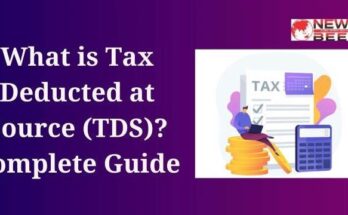A Fixed Deposit (FD) is a financial instrument offered by banks and financial institutions, providing investors with a higher rate of interest than a regular savings account, until the given maturity date. It’s a popular investment choice among individuals seeking a safe and secure way to save money while earning a steady return. In this comprehensive overview, we will explore the concept of Fixed Deposits, including their features, benefits, types, how they work, interest rates, calculation methods, tax implications, comparison with other investment options, and factors to consider before investing in an FD.
Table of Contents
ToggleIntroduction to Fixed Deposits
Fixed Deposits, also known as term deposits, allow individuals to deposit a lump sum of money for a fixed period, ranging from a few weeks to several years, at an agreed-upon interest rate. The interest rate remains fixed for the term of the deposit, making FDs a predictable and risk-free investment option. Upon maturity, the investor receives the principal amount along with the accrued interest.
What is Fixed Deposit (FD)?
A Fixed Deposit (FD) is a financial instrument offered by banks and financial institutions, providing investors with a higher rate of interest than a regular savings account, until the given maturity date. It involves depositing a lump sum of money for a fixed period, ranging from a few weeks to several years, with the interest rate set at the time of the deposit. This interest rate remains constant, irrespective of changes in the market interest rates, making FDs a secure and predictable investment option.
The main attraction of fixed deposits is their safety and guaranteed returns. They are considered one of the safest investment options, as they are unaffected by market fluctuations, providing a stable and fixed income through interest earnings. The interest rate depends on the tenure and amount of the deposit, and typically, longer tenures offer higher interest rates.
Upon maturity, the deposited amount along with the accumulated interest is returned to the investor. The interest earned on the FD can be received at regular intervals (monthly, quarterly, etc.) or can be reinvested to compound, depending on the investor’s choice.
Fixed deposits also offer flexibility in terms of tenure, allowing investors to align their investment period with their financial goals. Moreover, investors can opt for premature withdrawal of their deposit, although this might incur a penalty and possibly a lower interest rate, depending on the institution’s policy.
Additionally, fixed deposits are often used as collateral for loans and credit facilities, making them not just a tool for saving and earning interest, but also a means of financial leverage. However, it’s crucial to compare the terms, interest rates, and withdrawal policies of different institutions before investing in a fixed deposit to ensure it meets your financial goals and requirements.
Features of Fixed Deposits
- Safety and Security: FDs are considered one of the safest investment options, as they are unaffected by market fluctuations.
- Fixed Interest Rates: The interest rates are fixed at the time of opening the deposit and do not change throughout the term.
- Maturity Period: The tenure of an FD can vary from a few days to ten years, offering flexibility to investors.
- Interest Payout Options: Investors can choose to receive interest payouts at regular intervals or reinvest the interest to earn compound interest.
- Loan Facility: Many banks offer loans against FDs, providing liquidity without having to break the deposit.
- Premature Withdrawal: FDs can be withdrawn before the maturity date, although this may attract a penalty.
Benefits of Fixed Deposits
- Guaranteed Returns: FDs offer guaranteed returns, making them an attractive option for conservative investors.
- Flexibility in Tenure: Investors can choose a tenure that suits their financial goals and requirements.
- Ease of Investment: Opening an FD is straightforward, with minimal documentation required.
- Compound Interest: Some FDs offer the option of compounding interest, which can significantly increase the return on investment over time.
Types of Fixed Deposits
- Standard Fixed Deposits: Regular FDs with a fixed tenure and interest rate.
- Tax-Saving Fixed Deposits: Special FDs with a lock-in period of 5 years, eligible for tax deduction under Section 80C of the Income Tax Act.
- Senior Citizen Fixed Deposits: FDs offering higher interest rates for individuals above 60 years of age.
- Cumulative and Non-Cumulative FDs: Cumulative FDs reinvest the interest, while non-cumulative FDs pay out interest at regular intervals.
How Fixed Deposits Work
When opening an FD, the investor chooses the amount, tenure, and the type of FD. The interest rate is then locked in for the duration of the deposit. Depending on the type of FD, interest is either paid out at regular intervals or reinvested. At the end of the tenure, the principal amount along with the accumulated interest is returned to the investor.
Tax Implications
The interest earned on FDs is taxable under the Income Tax Act, 1961. It is added to the investor’s total income and taxed according to the applicable tax slab. However, banks deduct TDS (Tax Deducted at Source) if the interest income exceeds a certain threshold in a financial year.
Comparison with Other Investment Options
FDs are often compared with other investment options like stocks, mutual funds, and government securities. While FDs offer safety and guaranteed returns, they generally provide lower returns compared to equity investments, which have higher risk but the potential for higher returns. Choosing between these options depends on the investor’s risk appetite, investment horizon, and financial goals.
Factors to Consider Before Investing in an FD
- Interest Rates: Compare rates offered by different banks and financial institutions to get the best deal.
- Tenure: Choose a tenure that aligns with your financial goals and liquidity needs.
- Premature Withdrawal Terms: Understand the penalties and terms associated with premature withdrawal.
- Loan Facility: Check if the bank offers a loan against the FD for emergency liquidity.
- Reinvestment Options: Decide whether to opt for a cumulative or non-cumulative FD based on your income needs.
You May Also Read:
What is Digital Marketing in Hindi
SEO Interview Questions and Answers
What is Affiliate Marketing Meaning
Conclusion
A Fixed Deposit (FD) is a financial instrument provided by banks and financial institutions, offering investors a higher rate of interest than a regular savings account, until the given maturity date. It is considered one of the safest investment options due to its fixed interest rate and maturity period. Upon maturity, investors receive their principal amount along with the interest earned during the period of the deposit. Fixed Deposits are a popular choice for individuals seeking a risk-free return on their investment, especially those who prefer to avoid the volatility of the stock market. The conclusion of a Fixed Deposit is the maturity stage, where the investment period ends, and the investor is entitled to the return of their deposit along with the accumulated interest.
FAQs:
Q1. What is a Fixed Deposit?
Ans: A Fixed Deposit is a financial instrument offered by banks and financial institutions where you deposit a lump sum of money for a fixed period. The interest rate is usually higher than that of a savings account and is fixed for the duration of the deposit.
Q2. How does a Fixed Deposit work?
Ans: When you open an FD, you choose a deposit amount and tenure. The bank locks the interest rate for the chosen tenure. At the end of the term, you receive your principal amount along with the interest earned.
Q3. What are the benefits of a Fixed Deposit?
Ans: Benefits of FD.
- Guaranteed returns: The interest rate is fixed for the tenure, ensuring a guaranteed return.
- Flexible tenure: You can choose a deposit period that suits your financial goals, typically ranging from 7 days to 10 years.
- Loan against FD: You can avail a loan against your FD up to 90% of its value, without breaking the FD.
- Ease of investment: Opening an FD is straightforward, and can often be done online.
Q4. Are there any risks associated with Fixed Deposits?
Ans: FDs are considered one of the safest investment options. However, the interest earned is subject to tax, which can reduce the effective return. Additionally, in a high inflation scenario, the real return (after adjusting for inflation) might be low.
Q5. Can I withdraw my Fixed Deposit before the maturity date?
Ans: Yes, but doing so may incur a penalty, and the interest rate will be lower than the agreed rate. Some banks offer a ‘premature withdrawal’ facility with conditions.
Q6. How is the interest on a Fixed Deposit taxed?
Ans: Interest earned on FDs is taxable under the Income Tax Act, 1961. The tax rate depends on your income slab. Banks deduct TDS (Tax Deducted at Source) if the interest income from FDs exceeds a certain threshold in a financial year.
Q7. What is the difference between cumulative and non-cumulative Fixed Deposits?
Ans: In a cumulative FD, the interest is compounded annually and paid at maturity along with the principal. In a non-cumulative FD, the interest is paid out at regular intervals (monthly, quarterly, semi-annually, or annually), which can provide a source of income.
Q8. Can I open a Fixed Deposit in the name of a minor?
Ans: Yes, FDs can be opened in the name of a minor, managed by a guardian until the minor reaches adulthood.
Q9. Are Fixed Deposits available to Non-Resident Indians (NRIs)?
Ans: Yes, NRIs can open NRE (Non-Resident External) or NRO (Non-Resident Ordinary) FD accounts, subject to the terms and conditions of the bank.
Q10. How do I choose the best Fixed Deposit scheme?
Ans: Consider factors like the interest rate, tenure, premature withdrawal penalties, and the bank’s reputation. Compare FD schemes from different banks and financial institutions to find the one that best meets your investment goals and requirements.




